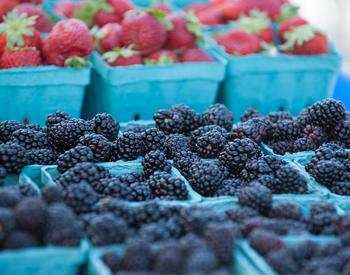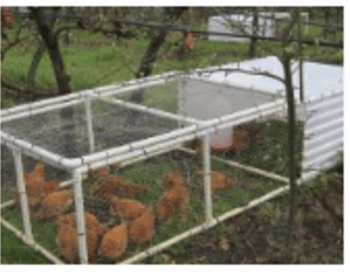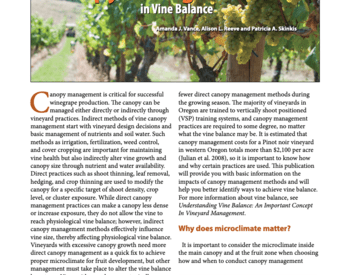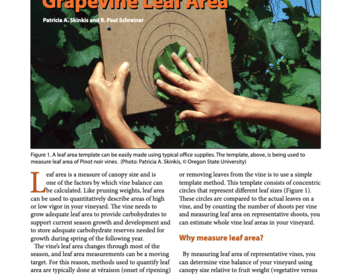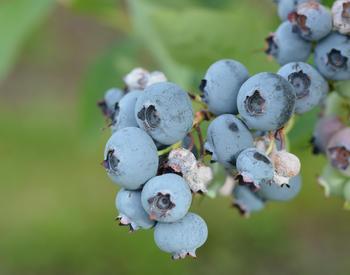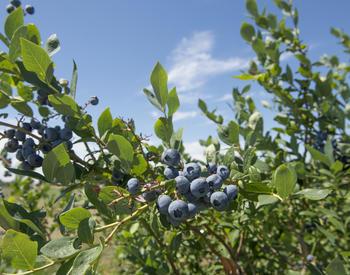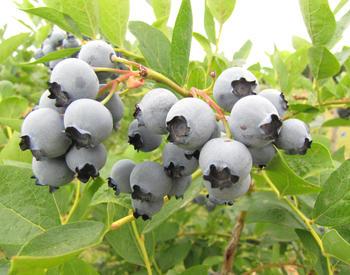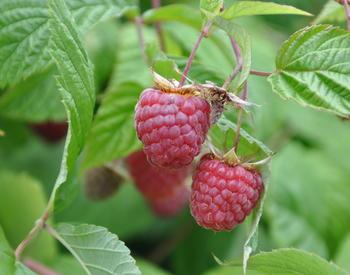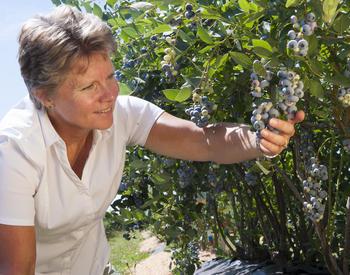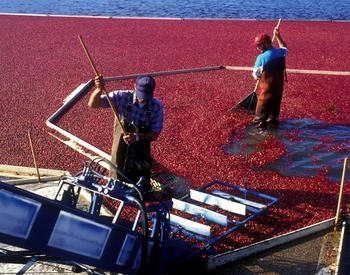Transcript
Good Agricultural Practices for Food Safety Training.
Video 1 of 5: Introduction to Food Safety and Foodborne Pathogens
Agriculture is an important part of Oregon's economy. As a worker in agriculture, what you do has effects on the human population that consumes the fruits. You have a lot of responsibility to prevent contamination of the food you handle. Microbes, like bacteria, viruses, and parasites, are small living things that you might transfer to the fruits you are handling. They are everywhere, in the water we drink, the air we breathe, and the food we eat. Some microbes are good, but some are very harmful and can cause disease. The microorganisms that can cause harm to humans are those that contaminate and grow on the surface or in the food we eat. The harmful microbes that contaminate and may grow on or inside foods are called "foodborne pathogens." Fruits are moist and have lots of nutrients. This is a perfect environment for microbes to grow quickly and easily. For example, bacteria can grow from one single cell to more than 16 million cells in 24 hours. These high numbers help the spread of the bacteria when contaminated fruits are in close contact with each other or are touched by humans. From 1996 to 2014, the U.S. Food and Drug Administration recorded more than 17,000 illnesses linked to foodborne pathogens that likely contaminated fruits on the farm.
Let's talk about some of the most common and harmful foodborne pathogens that can be transferred to fruits. In the bacteria group, we find most of the foodborne pathogens. Salmonella and E. coli are bacteria that are considered foodborne pathogens. All Salmonella species are considered foodborne pathogens, but only some E. coli are pathogenic. These bacteria can be found in the intestines of some animals such as birds and cattle. The bacteria are therefore also found in the feces of these animals. If you accidentally touch infected feces and don't wash your hands, the bacteria then get on whatever you touch and can grow and spread from there. It only takes 10 cells of the pathogenic E. coli to make someone sick. Salmonella and pathogenic E. coli can cause diarrhea, abdominal cramping, and fever, and both bacteria can be fatal. Another bacterium that can cause sickness called listeriosis is Listeria monocytogenes. Listeria monocytogenes is found naturally in the soil. Any fruit that touches this bacterium can become contaminated. If you come in contact with any pathogenic bacteria and touch fruits without washing your hands for 20 seconds, the fruits are now contaminated. You can watch our second video in the series for proper handwashing technique.
In addition to bacteria, other harmful microbes are viruses, which are small particles that use your cells to reproduce. They can be transferred to fruits if an infected person does not wash their hands properly after using the bathroom; an example of such a virus is Norovirus which causes gastrointestinal damage. Another example is the Hepatitis virus. Infected person's blood can contaminate fruits. Fruits that are eaten raw are the most likely to be contaminated in some step of the farm-to-table process.
Once fruits are contaminated with human pathogens, it is very difficult to remove them. Prevention is key to reduce the risk of fruit contamination, which means you must always practice good personal hygiene and sanitation before, during, and after harvest. In addition, if you are feeling sick, tell your supervisor right away and do not put your hands on any fruits or food contact surfaces. It is best to go home right away and stay home until you are better. An outbreak of disease could make other people sick and could cost you and your fellow workers your jobs. Remember, following good agricultural practices are the key to a healthy and prosperous industry! These videos are only intended to promote good hygiene practices on a farm to reduce the risk of contamination of fresh agricultural products.
Este video presenta el concepto de patógenos transmitidos por los alimentos y los tres grupos principales: bacterias, virus y parásitos. También se discuten las fuentes, la propagación y la reproducción de estos patógenos. Además, quienes miren este video aprenderán como los patógenos transmitidos por los alimentos pueden afectar tanto a los trabajadores como a los consumidores, y porque los trabajadores agrícolas deben practicar una excelente higiene personal.
